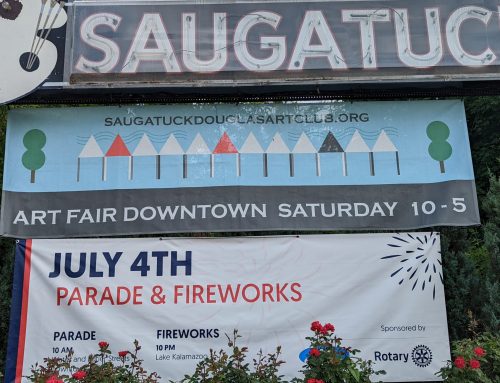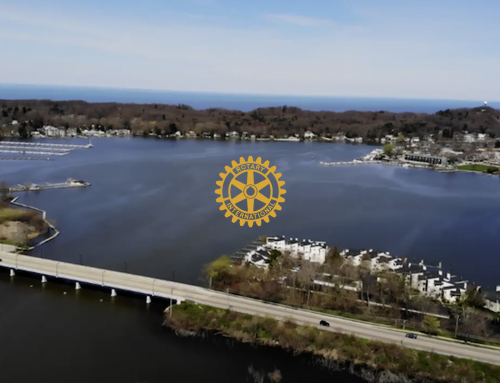Several local folks have approached Rotarians lately who want the Rotary Club to “get more involved in the REAL problems we have in this/these town/towns.” (Seems we can’t even agree on how many towns we’re talking about). When asked what those problems might be, they respond with a wide range of answers. That got us to thinking. Rotary wants to know what you are thinking.
Some background may help: Last year, the Rotary Club did an internal needs assessment of the Saugatuck-Douglas-Township area in order to determine where we could focus our efforts to create the most positive lasting change. We used a framework developed by journalists James and Deborah Fallows who traveled around the country over the last decade visiting small cities and towns like ours. They quickly saw patterns that helped explain and separate those that are thriving from those that are struggling. The journalists assembled 10 ½ conditions in thriving towns that we Rotarians used to assess how well our hometowns are doing. You can read more about the Fallows’ findings in their book Our Towns: A 100,000-mile Journey into the Heart of America or at www.ourtownsbook.com.
Here are their 10 ½ criteria for thriving towns. How would you assess our towns against them?
- Divisive National Politics Seem a Distant Concern—Thriving towns generally avoid the rancor about national politics.
- You Can Easily Pick Out the Local Patriots—People can easily point out “who makes this town go” when asked.
- Public-Private Partnerships Are Tackling Real Problems—Businesses and governments partner effectively to address problems or capitalize on opportunities.
- People Know Their Town’s Civic Story—America has a story, even if people disagree with its particulars. Thriving towns can explain their story to connect where they’ve been to where they are going.
- They Have Vibrant Downtowns—Investment and creativity are being applied to maintain distinctive and healthy “Main Streets.”
- They Are Near a Research University—Such institutions bring engaged, intelligent, and affluent people into town.
- They Have, and Care About, a Community College—Such colleges help address income inequalities and keep younger people from moving away.
- They Have Distinctive and Innovative Public Schools—The common theme was support from the population and intensive experimentation in K-12 schools.
- They Make Themselves Open—To offset a natural “brain drain” to big cities, successful towns welcome diverse newcomers and outsiders.
- They Have Big Plans—If the Mayors or City Managers brag about their new parklands, housing, or attractions, it’s a good sign. And this one…
10 1/2. They Have an Active Local Craft Brewing Scene—One weird final marker of success was whether the kind of entrepreneurial creative mindset was present that generates and sustains a solid local craft brew or spirits scene.
The Rotary Club decided last year that our main focus would be on helping our distinctive K-12 Public Schools become even better. We made this decision mainly to support the vibrancy and contributions of our students, younger families, teachers, and administrators that help our towns thrive. After all, our towns have no other educational anchors. That why we’re introducing a Boys & Girls Club here this spring and raising just under $100,000 each year for the next three years to do it.
What do you think? We invite you to weigh in on these criteria by taking this assessment online at https://www.surveymonkey.com/r/SDTHRIVE.
Your individual opinions are confidential, you will remain anonymous, and we’ll share the overall results next month.




